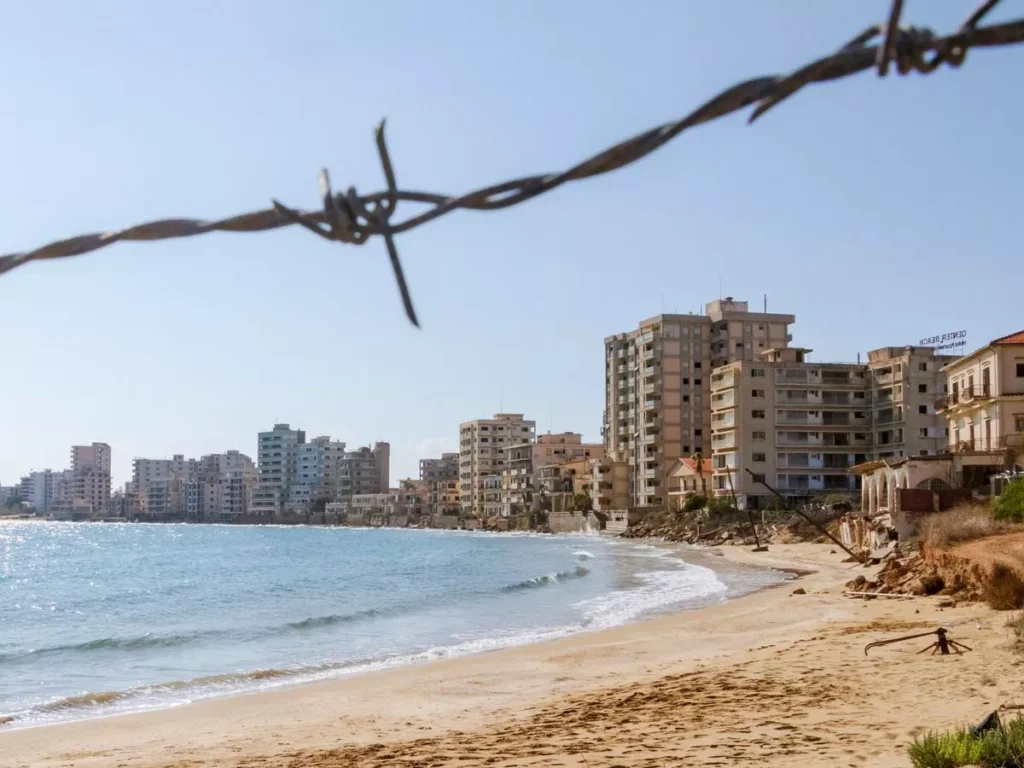On the southeastern coast of Cyprus, nestled along the shimmering Mediterranean Sea, lies Varosha—a once-thriving resort town now frozen in a haunting stillness. Known for its golden beaches, bustling hotels, and vibrant nightlife during the 1970s, Varosha became an emblem of modern luxury and leisure in the Mediterranean. Yet, today, it stands as a ghost town, locked behind fences and watchtowers, a poignant reminder of geopolitical conflict and human displacement.
Varosha is not just abandoned real estate; it is a monument to history paused, a cityscape caught in limbo.
The Rise of Varosha: A Mediterranean Jewel
In the decades following World War II, Varosha blossomed into one of Cyprus’s most popular tourist destinations. Once a humble fishing village, the area was transformed into a luxury resort, attracting celebrities, diplomats, and vacationers from Europe and beyond.
Its beaches were famous for their golden sands and crystal-clear waters, while hotels like the iconic The Asterias and The Lord’s Palace catered to guests seeking Mediterranean glamour. Cafés, boutiques, and nightclubs thrived, making Varosha a beacon of economic prosperity and cultural exchange.
The Conflict That Changed Everything

The vibrant life of Varosha came to an abrupt halt in July 1974. Following a coup d’état backed by the Greek military junta aimed at uniting Cyprus with Greece, Turkey launched a military intervention citing the protection of the Turkish Cypriot minority as justification.
During the Turkish invasion, residents of Varosha fled in panic, expecting to return soon. However, Turkish forces sealed off the area, declaring it a military zone. Since then, Varosha has been fenced off and largely off-limits to civilians—a buffer zone under Turkish control, while the southern part of Cyprus remains governed by the Republic of Cyprus.
Life Frozen: The Ghost Town Effect
Walking through Varosha today is like stepping into a time capsule. Buildings stand in eerie silence, their façades crumbling under decades of neglect. Apartment blocks, hotels, and shops remain intact yet lifeless, with broken windows and overgrown streets.
Furniture still lies scattered, trees grow through cracked pavements, and faded signs hint at the town’s former vitality. The sense of abandonment is palpable, yet it’s not a place of decay alone—it’s a place suspended, caught between past and future.
The imagery of Varosha—an entire town locked in time—has drawn photographers, filmmakers, and curious visitors, though official access remains highly restricted. This frozen cityscape serves as a stark visual testament to the human cost of unresolved conflict.
Geopolitical Significance and Ongoing Disputes

Varosha’s status is more than a matter of local concern—it is a geopolitical flashpoint. The area remains under Turkish military control, and its reopening has been a contentious issue in Cyprus peace talks.
The United Nations has called for the town to be returned to its original inhabitants under UN administration, emphasizing that its current status violates international law. Turkey’s occasional moves toward reopening parts of Varosha have sparked international criticism and renewed tensions.
For the displaced residents, many of whom fled with little more than the clothes on their backs, Varosha represents loss, longing, and unresolved trauma.
Stories of Displacement and Memory
Behind the deserted streets are stories of families torn apart, homes lost, and dreams deferred. Many former residents of Varosha have lived as refugees for decades, holding onto hope that they will one day return to their hometown.
These personal histories add a deeply human dimension to the geopolitical drama. Community groups and diaspora organizations advocate for property rights, reconciliation, and healing, reminding the world that Varosha is not just about territory—it is about people and identity.
The Future of Varosha: Between Hope and Uncertainty

Recent developments have raised questions about Varosha’s future. Some parts of the fenced area have been partially opened, though access remains limited and heavily controlled. Reconstruction efforts by Turkish-backed authorities have sparked concern over heritage preservation and the potential erasure of the town’s original character.
Will Varosha be revived as a resort paradise? Will it become a symbol of division or reconciliation? The answers remain uncertain, entangled in broader diplomatic efforts surrounding Cyprus’s complex political landscape.
Final Reflections
Varosha stands as a powerful symbol—a cityscape paused between history and possibility. It reminds us how places can become monuments not only to human achievement but to conflict, displacement, and hope deferred.
Walking through the empty streets of Varosha—through hotels that still hold echoes of laughter, cafés that once bustled with life—is to confront the fragility of peace and the enduring impact of political struggles on everyday lives.
In the shimmering light of the Mediterranean, Varosha waits. For resolution. For return. For a future where its golden sands might once again welcome the footsteps of life.
